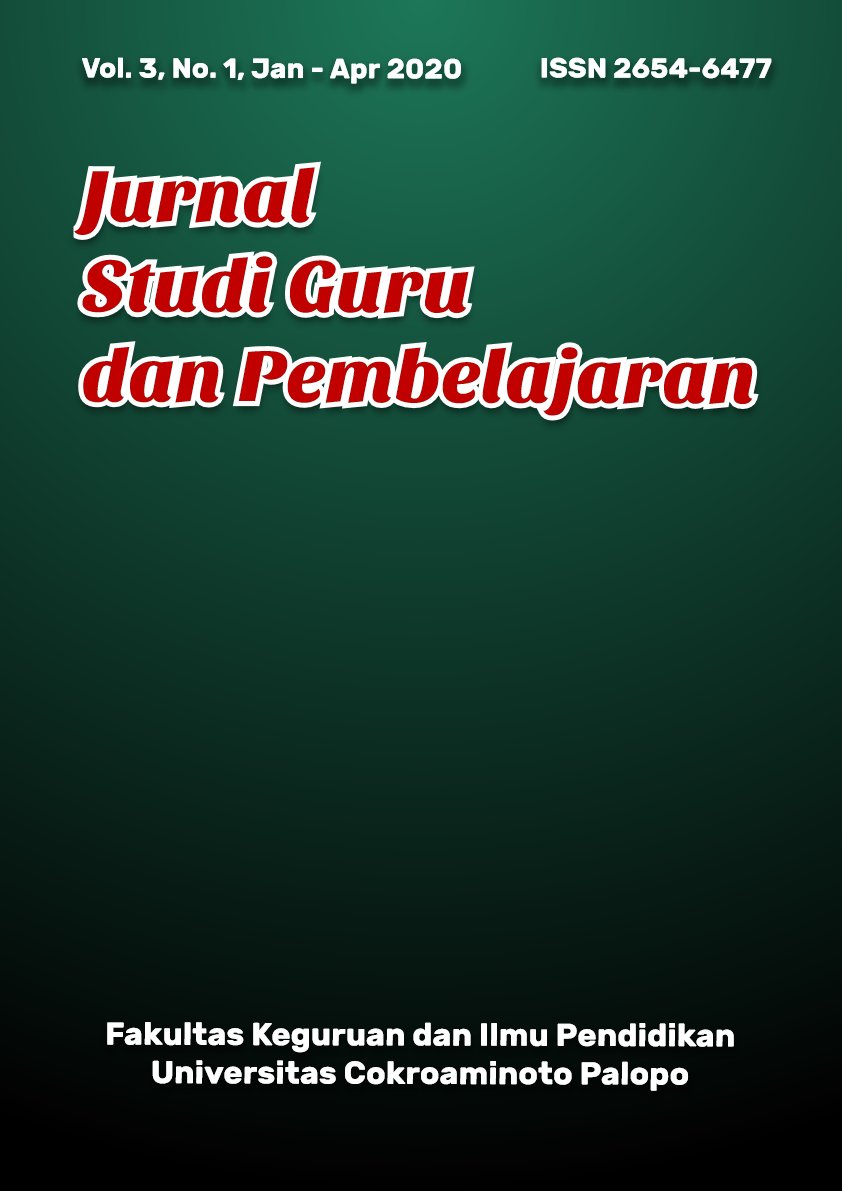Pembuktian Kemampuan Anti Bakteri Ekstrak Daun dan Kulit Jarak Pagar (Jatropha culcas) Terhadap Bakteri Staphylococcus aureus Secara In Vitro Dalam Pembelajaran Dengan Metode PBL Terhadap Mahasiswa Semester VII Program Studi Pendidikan Biologi FKIP UNWIRA
DOI:
https://doi.org/10.30605/jsgp.3.1.2020.244Keywords:
antibakteri, ekstrak jarak pagar, Staphylococcus aureus, in vitroAbstract
Seiring dengan kerusakan ekosistem dan habitat makluk hidup termasuk yang bersel satu, menyebabkan bermigrasinya makluk hidup tersebut termasuk pada tubuh manusia sehingga menimbulkan penyakit. Mikroba S. aureus termasuk salah mikroba pathogen yang mudah resisten terhadap obat-obatan bila ditangani secara salah. Pengendalian terhadap mikroba yang sudah resisten dilakukan dengan cara mencari obat baru yang dapat menghambat dan atau mematikan mikroba resisten tersebut. Salah satu yang secara tradisional digunakan masyarakat secara tradisional yaitu jarak pagar. Penelitian ini dilakukan untuk menjawab masalah: apakah ekstrak jarak pagar berkemampuan sebagai antibakteri terhadap bakteri S. aureus secara in vitro? Mengacu pada rumusan masalah tersebut maka tujuan yang mau dicapai dari penelitian ini yaitu membuktikan ada tidaknya khasiat tumbuhan jarak pagar yang diekstraksi melalui indikator terbentuk tidaknya zona bening pada kondisi in vitro. Hasil penelitian menunjukkan bahwa ekstrak tumbuhan jarak pagar terbukti berkemampuan sebagai antibakteri pada level konsentrasi 25%, 50%, 75% dan 100%. Berkemampuan sebagai antibakteri, dengan zona hambat terbesar terjadi pada konsentrasi 100%.
Downloads
References
Amir, T. (2007). Inovasi Pendidikan Melalui Problem Based Learning: Bagaimana Pendidikan Memberdayakan Pemelajar di Era Pengetahuan. Jakarta: Prenadamedia Group.
Duch. (2001). Pembelajaran Berbasis Masalah. Jakarta: Sejarah Indonesia
Glazer, E. (2001). Problem Based Instruction. In M. Orey (Ed), Emerging Perspectives on Learning, Teaching, and Technology.
Hambali, E. (2007). Teknologi Bionergi. Bogor. PT. Agromedia Pustaka.
Prihandana, R. & Handoko, R. (2006). Petunjuk Budidaya Jarak Pagar. Jakarta: Agromedia Pustaka.
Hasnan, & Mahmud, Z. (2006). Panduan Pembenihan Jarak Pagar (Jatropha Curcas L).
Savery. (1995). Problem Based Learning: An Instructional Model and Its Constructivist Framework.
Sanjaya, W. (2007). Strategi Pembelajaran Berorientasi Standar Proses Pendidikan. Jakarta: Kencana Prenada Media Group.
Tjitrosoepomo, G. (2003). Morfologi Tumbuhan, Edisi Ke 14. Yogyakarta: Gadjamada University Press.
Trianto. (2007). Model-model pembelajaran inovatif Berorientasi kontruktifistik. Jakarta: Prestasi Pustaka.
Downloads
Published
How to Cite
Issue
Section
License
In submitting the manuscript to the journal, the authors certify that:
- They are authorized by their co-authors to enter into these arrangements.
- The work described has not been formally published before, except in the form of an abstract or as part of a published lecture, review, thesis, or overlay journal.
- That it is not under consideration for publication elsewhere,
- That its publication has been approved by all the author(s) and by the responsible authorities – tacitly or explicitly – of the institutes where the work has been carried out.
- They secure the right to reproduce any material that has already been published or copyrighted elsewhere.
- They agree to the following license and copyright agreement.
License and Copyright Agreement
Authors who publish with JSGP agree to the following terms:
- Authors retain copyright and grant the journal right of first publication with the work simultaneously licensed under Creative Commons Attribution License (CC BY-SA 4.0) that allows others to share the work with an acknowledgement of the work's authorship and initial publication in this journal.
- Authors are able to enter into separate, additional contractual arrangements for the non-exclusive distribution of the journal's published version of the work (e.g., post it to an institutional repository or publish it in a book), with an acknowledgement of its initial publication in this journal.
- Authors are permitted and encouraged to post their work online (e.g., in institutional repositories or on their website) prior to and during the submission process, as it can lead to productive exchanges, as well as earlier and greater citation of published work.














